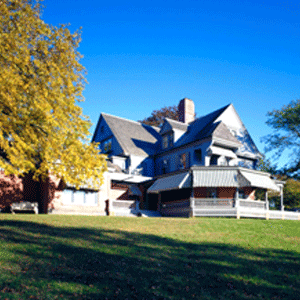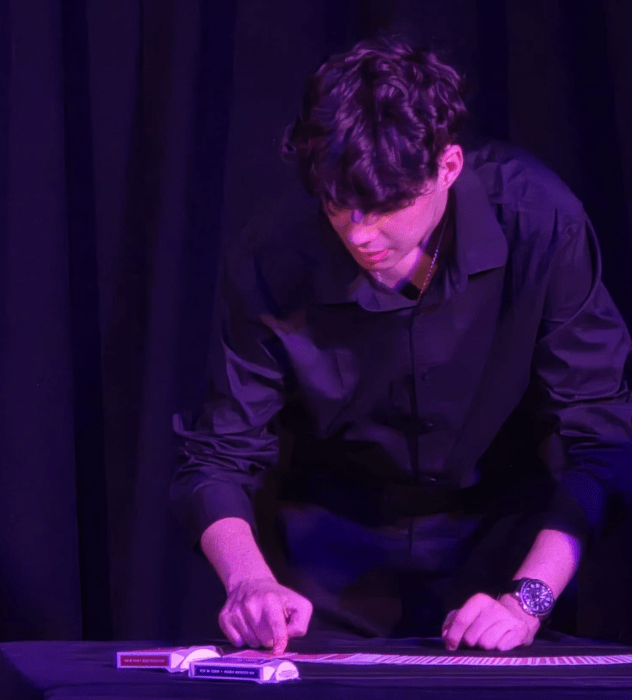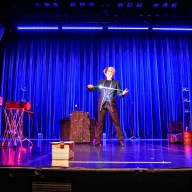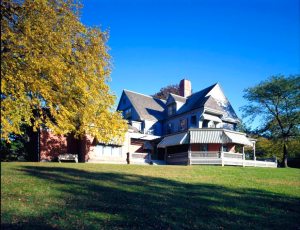
Sagamore Hill, the former home of revered 26th President Theodore Roosevelt located in Cove Neck, has recently completed an extensive $10 million face lift and is ready to show it off to the world.
A 14,175-square-foot Queen Anne-style home originally constructed in 1886, Roosevelt lived in Sagamore Hill until his death in 1919. Eventually, Congress established the home and it’s surrounding property as The Sagamore Hill National Historic Site, under the control of the National Park Service, where it remains open to the public to this very day.
However, time and the elements eventually took their toll upon Sagamore Hill and it became readily apparent several years ago that something needed to be done, according to Susan Sarna, Museum Curator at Sagamore Hill who conducted a recent well-attended lecture on the renovation project at the Syosset Public Library.

“What we realized was that the house was in dire need of repairs, and it wasn’t just one thing, it wasn’t just the roof or just the electric, we needed to fix the entire house,” she said. “In order to stop one issue, we needed to stop all of the issues. So, what we did was a complete foundation from the roof down to the foundation.”
Several years ago, surveys and planning began in preparation of the renovation. Three years ago, in May 2012, the entire collection of items within the house was removed and work began on Sagamore Hill in earnest, funded by the National Park Service to the tune of $10 million. Sarna herself headed up the detail that was charged with removing, packing, storing, and eventually replacing all of the items and objects housed within Sagamore Hill when the construction was finally complete.
“We preserved all of the artifacts from within the house—we had them conserved,” she said. “But the house itself is actually the number one artifact at Sagamore Hill, because without the house, we don’t have the artifacts to put in it that Theodore Roosevelt owned.”
However, unlike a run-of-the mill house, great care had to be taken with the work done on a historic site such as Sagamore Hill to ensure that it was upgraded to modern standards while preserving as much of the original structure as possible, Sarna said.
“Even when the electrician ran new lines, he wasn’t allowed to cut into any of the original plaster or floorboards, because those were original,” she said. “We took all 98 windows out, and kept them intact. We just replaced the parts that were rotted out. We didn’t want to replace the original wood, we wanted to keep the integrity intact.”
During the renovation of the house the rest of the grounds, including the museum and visitors center, remained open.
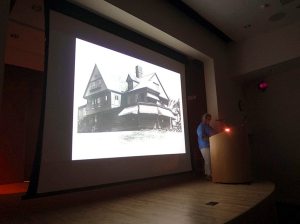
Michael Vezzi of Mineola is a member of the Friends of Sagamore Hill, a group of volunteers that work on the grounds of the historic site and hold various fundraising events when the house needs something that its usual budget doesn’t allow for. Their contribution to the recent renovation efforts comes in the form of new outdoor awnings that will replace the original ones.
Painstaking effort was put into making sure the awnings will replicate their forebears as closely as possible, he said.
“It’s over 120 years old and I’ve always been taken with the great sense of America that resonates throughout the house and the property,” he said. “So, when they started the re-fit of the house, it was so important that they remained true to the spirit of the property and I really feel they did that perfectly.”
The renovation of Sagamore Hill has finally been 100 percent completed and the first round of private practice tours were conducted within the house on June 18 of this year. The house will be officially opened once again to the general public on July 12, Sarna said, and Long Islanders will be able to once again experience a unique taste of history exactly as our 26th President would have intended it.
“Our whole point was that Theodore Roosevelt himself could walk in the door and think he was back home again. We couldn’t notice a change,” she said. “We interpreted the house as historically accurate, aside from a new boiler and new wiring, but the public doesn’t see that. We tried to upgrade the house, to save the house, to preserve the house, but without the damaging the historical impact of the house.”
To find out more, visit www.nps.gov/sahi.




